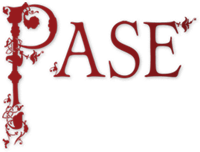Table of Contents
Top of page
Name
Summary
Distribution Map
Property List
Profile
Bibliography
Bottom of page
Mainard 3
Mainard ‘of Somborne’ (Hants), fl. 1066
Male
DWP
4 of 5
Summary
Mainard 3 held a small estate in west Hampshire TRE assessed at 1 hide and with a value of 30s; his lord was King Edward (Edward 15).Distribution map of property and lordships associated with this name in DB
List of property and lordships associated with this name in DB
Holder 1066
| Shire | Phil. ref. | Vill | DB Spelling | Holder 1066 | Lord 1066 | Tenant-in-Chief 1086 | 1086 Subtenant | Fiscal Value | 1066 Value | 1086 Value | Conf. | Show on Map |
|---|---|---|---|---|---|---|---|---|---|---|---|---|
| Hampshire | 45,9 | Kings Somborne | Mainardus | Mainard 'of Somborne' | Edward, king | Waleran the huntsman | Roger 'the man of Waleran the huntsman' | 1.00 | 1.50 | 0.50 | B | Map |
| Totals | ||||||||||||
Profile
Mainard 3’s small estate was at King’s Somborne, which lies in a small tributary valley of the River Test near its confluence with the Wallop Brook in Hampshire. DB records that his estate was ‘held of King Edward (Edward 15)’, which could indicate that Mainard was a dependent tenant of the king or that he was simply in his commendation.The extreme rarity of the name Mainard in pre-Conquest England renders it possible that Mainard 3 was the same person as Mainard 4, who held a small estate in west Wiltshire TRE. Nevertheless, the facts that both estates were small, were separated by more than 30 miles (and Salisbury Plain) and passed to different post-Conquest successors make it more likely that they were different people.
Lewis suggests that Mainard 3 was the same as Manna , who held two tiny estates less than 10 miles from Somborne TRE and one of which passed to the same post-Conquest successor as Mainard 3’s estate (Lewis 1995: 142). This suggestion cannot be ruled out, because the form Manno that appears in these two entries in DB could represent a short form of Continental Germanic names in Magan- such as Mainard (Forssner 1916: 181, 183). However, Manno could equally well represent the Old Danish names Magni or Manni or the Old English name Manna (von Feilitzen 1937: 323-4). This latter name could arise as an original formation or as a shortened form of OE names in Mann- and there are more than a dozen instances of Mann(a/e) in the PASE corpus, to which can be added that of a peasant from tenth-century Hatfield (Insley 2003: 379, 383-4). It is more likely, therefore, that the two TRE instances of Manno in Hampshire represent a form of the native name Manna than a shortened form of Mainard.
Bibliography
Forssner 1916: T. Forssner, Continental-Germanic Personal Names in England (Uppsale, 1916)
Insley 2003: J. Insley, ‘Pre-Conquest personal names’, Reallexikon der Germanischen Altertumskunde 23 (Berlin and New York, 2003)
Lewis 1995: C. P. Lewis, ‘The French in England before the Conquest’, Anglo-Norman Studies 17 (1995)
von Feilitzen 1937: O. von Feilitzen, The Pre-Conquest Personal Names of Domesday Book (Uppsala, 1937)
